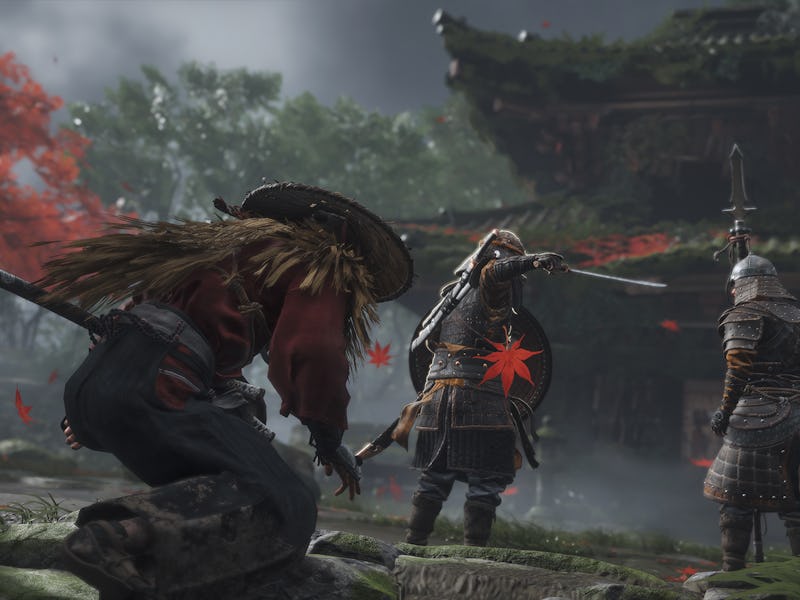Ghost of Tsushima does what Assassin's Creed never could — and way better
Ghost of Tsushima feels like a dream come true, for better or for worse.

The Assassin's Creed games have always very hit or miss to me, even more so since I made a concerted effort to get into the series this year. Assassin’s Creed Odyssey never really clicks because of the overly intense RPG elements. Assassin’s Creed Syndicate does thanks to its well-realized world. Each entry feels unique, some of them are rather good, and yet I’ve never been wowed by an Assassin’s Creed game.
For the longest time, an Assassin's Creed game set in feudal Japan felt like an obvious, great fit for the franchise, but after playing Sucker Punch Productions’ Ghost of Tsushima, I don't really want it to happen anymore.
You can feel how many different games have influenced Ghost of Tsushima, with the strongest connection being to the Assassin’s Creed franchise. The balance of open-world exploration, floaty action combat, and stealth is almost identical. It’s clear, even from Sucker Punch’s canceled Prophet demo, that the team was taking a lot of influence from Ubisoft’s beloved series. But Ghost of Tsushima feels like an evolution for that same type of game.
Ghost of Tsushima is able to hit the same heights as the best Assassin’s Creed games by giving the player an interesting set of tools to approach conflicts with in any way they see fit. It also accurately realizes an intriguing part of Japanese history. The historical elements of Assassin’s Creed games are always some of the most interesting, and Ghost of Tsushima never has to worry about cutting to a modern-day setting like ever Assassin’s Creed does.
While Ghost of Tsushima currently lacks the Discovery Tour mode of Assassin’s Creed Odyssey that also serves as an educational tool, the way it presents the island of Tsushima is nothing short of stunning. Ghost of Tsushima's world design is fantastic, staying accurate to the island's geography while also using innovative gameplay features like the Guiding Wind to direct the player in clever ways.
Ghost of Tsushima also has top-tier graphics and a photo mode that together showcase some of the best visuals from this generation of games. I haven’t been that impressed by what’s been shown of Assassin’s Creed Valhalla so far, but Ghost of Tsushima hits all of the same structural beats with the polish of a first-party Sony game. Based on what we've seen so far from Valhalla, it seems like Ghost of Tsushima is a far better Assassin's Creed game — and it's not even an actual Assassin's Creed game.
Ghost of Tsushima does still retain some of the sam problems commonly found in the franchise: While players have a varied toolset, combat tends to be quicker and more effective than stealth in almost every scenario, so there’s an incentive to avoid the game’s stealthier maneuvers.
Ghost of Tsushima’s overall mission design feels very dated, a common issue in older Assassin’s Creed games. There are plenty of boring “follow the target” missions or forced stealth scenarios with instant-fail conditions. These aren’t much fun, and while the Assassin’s Creed games have been phasing out these kinds of missions in recent installments, Ghost of Tsushima embraces them wholeheartedly.
Ghost of Tsushima mixes open-world exploration, action, and stealth gameplay quite similarly to Assassin's Creed.
Ghost of Tsushima has several problems, but it still checks all of the right boxes an Assassin’s Creed game set in Japan would deliver. It’s also arguably more interesting for the game to be rooted in a compelling historical drama rather than forcing a connection to a more contemporary plot hook. This freedom and the level of polish Sucker Punch gave Ghost of Tsushima made it more enjoyable, even with its faults, than any Assassin’s Creed game I’ve played.
I've always wanted Assassin’s Creed to go to Japan, but I don't have to worry about that anymore. Ghost of Tsushima has it covered.
Ghost of Tsushima is now available on PS4.
This article was originally published on